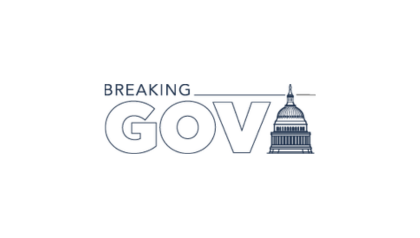 Commercial satellites capable of photographing objects a half-meter wide with stunning clarity from 423 miles above the Earth have become a routine part of the analysis picture for the 17 government agencies that make up the intelligence community.
Commercial satellites capable of photographing objects a half-meter wide with stunning clarity from 423 miles above the Earth have become a routine part of the analysis picture for the 17 government agencies that make up the intelligence community.
But high resolution satellite images are also gaining wider application at a variety of other federal agencies, from the U.S. Geological Survey for precision mapping to the Federal Emergency Management Agency to assess disaster response strategies.
And if Rep. Frank Wolf (R-VA) has anything to say about it, he’d like to see the power to peer into remote regions on Earth put to even greater use across government as a tool to document and stem human rights abuses.
Wolf represents a vibrant swath of suburban Northern Virginia–and has since 1981. Now in his 16th term, he has also seen his district grow into an economic epicenter for technology firms, thanks to district’s proximity to Washington, D.C., and Northern Virginia’s favorable business climate. It also turns out, his district is home to one of the world’s leading commercial providers of satellite imagery and imagery processing services, GeoEye.
But even Wolf, who chairs the House Subcommittee on Commerce, Justice, Science and Related Agencies including NASA was surprised by what he saw when GeoEye Chief Executive Matt O’Connell and GeoEye engineers showed him the quality of the satellite imagery and the image processing capabilities the Herndon, Va.-based company makes available to the federal government.
Wolf had swung by GeoEye’s corporate offices late last month and agreed to address nearly 200 GeoEye employees in a town hall session at a nearby hotel. During his visit, Wolf provided a stark outlook on the political gridlock and the staggering debt gripping America and criticized the Chinese government’s support of corporate espionage and continued human rights abuses.

“I think America is in trouble,” Wolf said. “We’re at a tipping point, with $14 trillion in debt growing every day. Four billion dollars every week goes to pay the interest on the debt. By 2021 (or so) $2.7 billion per day will be needed (for interest payments),” he said.
“It troubles me to see the state of Congress,” he said, taking special aim at politicians who had signed Grover Norquist’s “no-tax” pledge in a prelude to the blistering indictment the senior Republican would make on the House floor the following week. “If we can’t close tax loop holes and we can’t fix the retirement age (on entitlements), the country is going to go down,” he warned.
It’s like your banker is killing your priest, spying on you, and yet still lending you money.”
Wolf also expressed growing concern about America’s largest lender, the Chinese government, and its ongoing record of human rights abuses and for stealing corporate secrets.
“Every company in America-especially high tech-has been spied upon,” he said. “It’s like your banker is killing your priest, spying on you, and yet still lending you money,” he said.
Wolf’s interests in human rights began with a series of trips to the Sudan, Darfur, and China dating back to the late 1980s, to survey human suffering. Defending human rights, and finding ways to expose and deter abuses, have been a passion of Wolf’s ever since.
Detailed satellite images offering evidence of human rights abuses could be a powerful tool in identifying and exposing those practices, Wolf said, speaking with reporters after his town hall session.
Wolf acknowledged he hadn’t been aware of the extent to which such imagery can now be freely shared by federal agencies through a licensing agreement GeoEye struck with the National Geospatial-Intelligence Agency in July.
That arrangement provides federal employee with password protected, online access to unclassified, high-resolution imagery within hours of its collection, using GeoEye’s EnhancedView web hosting service. The service combines GeoEye and third-party imagery to deliver highly precise base maps and allows users to access new imagery online within hours of collection.
Users can access imagery through a variety of geography-based software tools, including Esri’s ArcGIS, Google Earth and other Open Geospatial Consortium (OGC) compliant tools and automatically receive notifications when new imagery is available for their area of interest.
The EnhancedView WHS is powered by GeoEye’s online access platform, EyeQ, which the company said enables thousands of concurrent users to easily access and download hundreds of terabytes of high-resolution imagery.
Recent commercial applications have combined GeoEye-1 and IKONOS satellite imagery and MJ Harden aerial imagery with data from commercial radar providers and the USDA National Agriculture Imagery Program.
The result is a variety of photographic, infrared and other types of images that can helping law enforcement officials, among other agencies, crack down on a variety of activities. One recent example was when analysts in Europe and the U.S. used high-resolution satellite imagery to identify and track shipments of timber illegally logged from rainforest parks in Madagascar. The images could be used to help prosecute traders involved in trafficking and put pressure on companies using rosewood sourced from Madagascar.
Wolf sees those types of capabilities potentially being of use to the State Department and other federal agencies to look for new signs of human rights abuses in Tibet, North Korea, and elsewhere, he said.